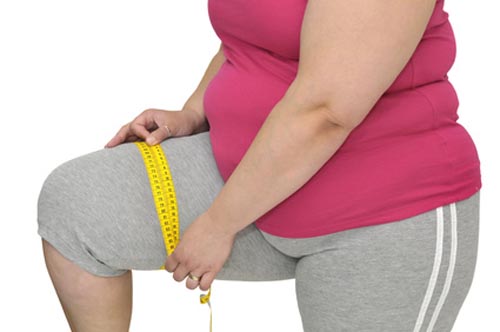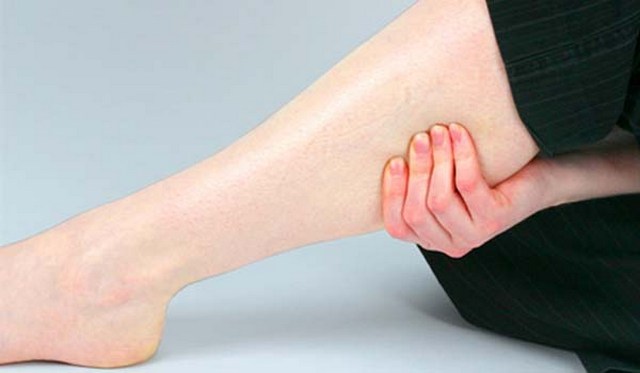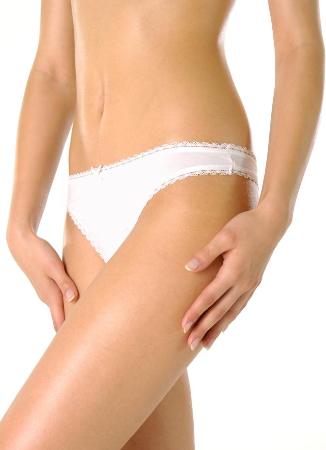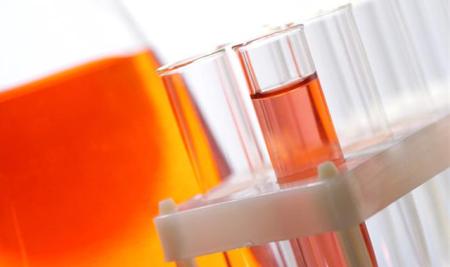
Liposuction is a cosmetic surgery in which excessive fat from particular areas is removed using cannula (a hollow stainless steel tube). Doctors remove fat from the fat deposits beneath the skin with the help of a powerful vacuum. This suction tube is inserted into the area from where the fat is to be removed by making small cuts in the skin, and then the vacuum is connected to the tube and extra fat is sucked out from the body. Liposuction is an effective method for weight loss; it makes exercise easier and controls levels of cholesterol in blood. The advantage of it is that it can be carried out on the fat areas that are stubborn and enhances the results of exercise increasing the mobility of the person. It can be carried out on the areas like face, buttocks etc. New techniques (tumescent liposuction and ultrasound-assisted liposuction) are safer, easier and less painful have approached the market in recent years.
Organ puncture
Puncture of the internal organ may also occur in some surgical cases. This complication may occur as the cannula inserted in the skin is not visible to the doctor. So sometimes it is possible to injure the organ inside while inserting the cannula. Organs such as intestines or spleen may get punctured during the process of abdominal liposuction. It is obvious that such damages to the internal organs can be corrected by the surgical process but in rare cases an organ puncture can be proven to be fatal. This kind of complication will be unlikely to occur through the hands of and experienced cosmetic surgeon.
Scarring
Scarring is the most common side effect of this process that may be permanent or will get withered away in a mater or time. Scars appear on the areas of skin where the cannula is inserted into the skin. The size of the scar will vary depending on the type of procedure done. Though the process is minimally invasive because of which the scar may be very small, like a nail scratch but the problem is that it won’t fade easily. In case where the liposuction may be done at various sites, this would end up into multiple scars on the skin. After the surgery it becomes very important for the scar to be safe guarded form the sun rays, if this is not the scar will becomes darker and visible due to tanning. These scars should fade away over few weeks but it still depends on the heredity, mobility after the surgery, skin type and other factors like smoking habits.
Swelling and Bruising
Bruises are the discoloration that may appear in the treated area. Along with bruises, heavy swelling can also appear on the surgical sites. This side effect can be commonly easily seen after the surgery. Doctors may provide medicines to provide you relief from swelling and bruises and it may subside over a month or two. Healing of the swelling and bruising again depends on the way the care and treatment is taken. Bruises in short term can be painful and should fade away after a few weeks.
Dimpling or contour irregularities
Dimpling can be defined as an indentation or a dimple in the skin. The skin may look ugly and bumpy because of removal of fat unevenly, or due to poor skin elasticity. This is not a common and usual side effect that appears after the surgery. Dimpling can appear only when equal amounts of fat deposits are not removed from all the sides of the area treated. This uncommon side effect is occurs only in the inexperienced doctors but with the advances in the technology the cases of dimpling can be overruled. There are treatment available for dimpling also, the procedure of liposuction can be repeated again to remove the fat from the left out area and thus can be fixed. This revision procedure can be done through non-surgical liposuction to avoid long recovery time. After the removal of the fat the skin over the area treated is left loose which may take up to 6 months for getting tightened. Skin tightening differs from person to person as skin of some people is very elastic in nature and retracts more quickly than others. Younger skin has more tendency of getting tightened then the older one. Some improvement in the shape of the area is usually noticeable just after the surgery. The improvements may continue for several weeks or even months.
Allergic reactions, Infection and burns
Some people may be sensitive enough to get allergic reaction to medications and materials used during surgery. The risk of infection is always when the body is incised, invasion of bacteria through these incisions can lead to infections. In some cases antibiotics are prescribed to be given before and after the surgery in order to prevent infection. These reactions and infections are the immediate risks after liposuction surgery and may take time to recover when once effected. Medical treatment becomes inevitable. To avoid pain and other such surgical side effects people tend to opt for laser liposuction but even this form of liposuction has side effects. One of the common side effects that it leaves back skin burns and number of scars. These burns take a long time to fade away and leave marks that may be permanent on those who went for this form of liposuction procedure.
Lidocaine toxicity
When tumescent method is used, it is possible that lot of saline fluid may be injected or the fluid injected may contain high concentration of lidocaine which is a general anesthetic. If the amount of lidocaine becomes too much for a person’s system a condition called Lidocaine poisoning may occur. Lidocaine poisoning may cause tingling and numbness, the patient may eventually suffer from seizures, unconsciousness and ultimately respiratory or cardiac arrest. Medical treatment is the only way one should seek to combat lidocaine toxicity.
Thrombophlebitis
Thrombophlebitis is can be considered as a massive side effect of liposuction. It can occur in superficial vein or in deeper ones. Thrombophlebitis is temporary and can be defined as unnatural inflammations of blood vessels and veins. 10-12 days after liposuction, the treated area may get swelled but this swelling may disappear gradually. The problem may last for 3-4 weeks after the surgery. Doctor may give some medicines to subside the inflammation down. They are easily treated when effects the superficial ones but the deeper ones are rather nasty to be treated.
Fluid imbalance
Fat removed in liposuction contains a lot of fluid since fluid is injected for the procedure. A large amount of fluid inserted for tumescent liposuction can lead to danger as the fluid balance of the body gets disturbed. The signs of fluid imbalance can also appear even after the patient is discharged. The heart, lungs and kidneys gets affected badly when too much of fluid remains in the body. More over if an excess of fluid is lost the patient due to heavy bleeding can lead to a condition called shock and also the patient may suffer from kidney or heart failures, arising a life threatening condition. The cardiac problems like cardiac arrhythmia or cardiac arrests may arise. Patient should consult doctor if any unusual symptoms occur.
Pulmonary embolism
Liposuction is a low risk surgery but the risk of pulmonary embolism cannot be ignored. It is the condition where the fat clots or blood clots travel from the treated site to the lungs. Pulmonary embolism is a dangerous side effect that may occur within 20 days after the surgery is few of the unfortunate cases. These are often associated with inactivity or venous damage. Any symptoms like chest pain, sweating, increased heart rate or palpitation arises then immediate medical attention is required. Pulmonary embolism is a life-threatening condition for the patient but is medically treatable.
Pulmonary edema
Pulmonary edema is a condition in which the fluid gets built up in the air sacs of the lungs and weakens breathing. It occurs when large amount of fluid is injected into the body of the patient shortness of breath, noises like wheezing and gurgling during breathing are the symptoms of occurrence of pulmonary edema. The symptoms of pulmonary edema are similar to the symptoms of pulmonary embolism. Prompt medical treatment can resolve the problem.
Post-operative weight gain
Post-operative weight gain is very common problem as people feel that they do not need to take care of their weight anymore and so they have got a license to eat more. But it is not like that people need to take a lot of care about the amount and type of food they eat and the amount of work they do in the whole day in order to maintain the extra pounds they lost. If one fails to take care of diet and physical activity the person can gradually put on weight. Liposuction is usually an effective process that helps removing fat deposits in small areas but if you regain weight after liposuction the fatty bulges may appear again and it may appear in an awkward way. Liposuction does not makes the body healthier but it is just a process that makes the area treated look lean, healthy and more attractive but one should take a note of the side effects and complications that can be accompanied along with this process. It does not make the skin over the area treated.


